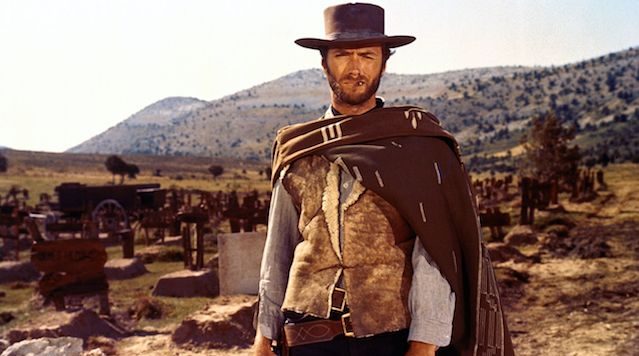I am probably one of the many who returned to this western classic after hearing the news that Ennio Morricone died at 91 on July 6. The great composer is mainly famous for his film scores, and especially for his “coyote call.” It is his music that you know even though you think you don’t know.
The main theme of The Good, the Bad, and the Ugly has been imitated and parodied many times ever since. The music score is so good that the melody is somewhat identified with the whole genre. Whenever you find yourself in a setting comparable to a western town, a desert with a rolling dry bush, or a staring battle, the melody rings in your head. And the first five notes is enough to set the whole mood.
That’s why we can’t start talking about the film without mentioning the music first. It is iconic. Besides, the film has many other qualities that mark itself as a classic western that one can’t make a western without being compared to this film.
The story follows three men in search of a buried treasure: Blondie (Clint Eastwood) being the good, Angel Eyes (Lee Van Cleef) the bad, and Tuco (Eli Wallach) the ugly. The script was written by Incrocci Agenore, Furio Scarpelli, Luciano Vincenzoni, and the director Sergio Leone.

The westerns usually center a moral war between the hero and the bad guy. The western hero stands for the virtuous, civilized, noble man, whereas the bad guy is usually from the wilderness, cannot be educated, and is profoundly immoral. This film separates itself from the traditional genre as their greed unites the main characters. Restraining from making clear moral distinctions between the characters, the film depicts the clash of people instead of ideologies. In a way, there isn’t good or bad, even though there is an ugly.
Blondie is named good, values justice, is a perfect aimer, but can leave his friend out in the desert without water. Angel Eyes is named bad, but he gets his deed done and keeps his word once he is paid. Tuco is not good, not bad, just ugly. He is indeed the most fun character, so you end up liking him. In the final scene, all the characters get the end that is in line with their virtues.
The director formerly tells you who to root for, because there are no sharp distinctions between the two sides that would make us despise one and cheer for the other. Such a perspective is significant for delivering the filmmaker’s stance on the Civil War as well. The film takes place during the war, in which the sides wear blue or grey. These two uniforms can easily be mistaken, which indeed happens in a scene. The soldier wipes the dust off to reveal the easy separation between the two sides. Leone underlines how people go into wars even though they don’t necessarily stand for firmly opposing ideologies.
Therefore distinguishing itself from the traditional genre norms, the film makes use of abundantly used close-ups, which are adopted from melodrama into western. The close-ups help with identification, showing emotions, and delivering without words. In this film, they make the audience know the characters as complicated people instead of merely as ideas.

The plot is a very clever one with perfect situations to challenge the characters. There is a tangible goal, many obstacles, with very high stakes (mostly survival). The sequences are linked to one another with twists and new, unexpected events. All of them come together like a puzzle owing to perfect timing. The timing is just right, and the shots are so precise, whatever happens. There is a scene in which Blondie is dehydrated, rolls down the sandhill, and Tuco throws the water bottle down to land right next to Blondie’s head. The precision is splendid.
Most of the supporting actors were non-professional Italian actors and were speaking Italian while filming the scenes. Therefore, their dialogues were dubbed after filming. The failed matching of lips to words might annoy you initially, but the film overall makes it up with its beautiful cinematography. Also, the director seems to be giving importance to actions more than dialogues. The gestures and mimics and the framings of the scenes tell a lot without the need to use any dialogue.
The Good, the Bad, and the Ugly is 180 minutes of the timeless western experience. The film also marks Eastwood and Leone’s final collaboration as the two never worked again following their dispute over money.
